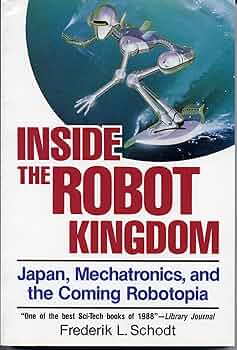
Eyck Freymann: How to Break China’s Minerals Chokehold
Why the allies need a multilateral commercial stockpile This essay is based on a Hoover History Lab working paper, co-authored with Joshua Stinson, William Norris,…
Thought Leader: Eyck Freymann

“What is the main cause of relationship failure?” It was a question I posed to the renowned psychologist Dr. Carl Rogers in the early eighties. “Trouble with the truth,” he told me. I probed further, “You mean people lie to each other?” He continued, “That is not quite what I mean. It is not the lies; it’s the deception. They have trouble with the whole truth. And, once that wholeness goes, they must work hard to get it back. Some people don’t want to work that hard.”
His words are especially fitting in our present-day era of acceptability of half-truths. Great customer relationships require “whole and nothing but” kind of truth. It is the main ingredient of trust, a significant culprit in its demise, and a part of the remedy in its return once lost. It is more than compassionate candor; it is deeper than authenticity; it is revealing your soul in a way that purifies connections. It is goodness personified. Truth-telling is so sacred we sometimes put words like “gospel” in front of it.
Tell the Truth, The Whole Truth, and Nothing But…
So, what does Dr. Rogers’ customer deception look like up close and personal?
“Ladies and gentlemen, another on-time arrival by Mayday Airlines,” the pilot announced as my plane pulled up to the jetway. A quick look at my always-accurate smartphone revealed we were fourteen minutes past the posted time I had told my client this flight was scheduled to arrive. I later learned that “on time” in the commercial flight arrival world had a fifteen-minute grace period. A pilot once told me it was like EBIT (earnings before interest and taxes). “The FAA built in a fudge factor for on-time since we cannot control the airfield traffic while we are taxiing to the gate any more than your employees can impact interest and taxes.”
But, what about customer transparency? What about the promise made or implied to passengers? Can you imagine the lyrics of Lerner and Loewe’s My Fair Lady tune being changed to: “Get me to the church within fifteen minutes of the wedding time?” Or how T-minus countdowns might impact rocket launches if there was a fudge (a.k.a., fib) factor? If on-time truly meant “on-time,” would there not be a greater incentive for airlines to collectively demand greater efficiency on the airfield and tarmac since they all would be getting dinged for unavailable gates or tardy ground crews?
Delivery to the curbside
Let’s take another common experience with the acceptability of half-truths—the drive-thru window at any quick-service restaurant. Last week I stopped mid-morning at one and ordered a breakfast to-go. There was no one behind me in the drive-thru lane. The lovely person asked if I would pull across the lot and park; someone would bring out my order to me. It has happened many times. “Why don’t I just stay here,” I suggested to her. “When my order is ready, you won’t have to have someone take the time to bring it across the parking lot; you can just hand it to me right here. I promise to move to the parking lot if another vehicle comes up behind me.”
“Oh, no,” she said in a panic. “You will have to move your car now because if you sit here, you will mess up my numbers for wait time in the drive-thru.” I gave this confusing issue one more attempt. “But won’t that give your restaurant a false read? If you keep faking the actual wait time by sending me away, what incentive will there be to speed up the operation inside that caused my trip to the ‘wait lot’ in the first place?” She could not deal with this cognitive dissonance and pleaded, “Please don’t get me in trouble with my manager.” A completely inefficient procedure predicated on maintaining a bald-faced lie solely for the sake of important, but deceptive, metrics!
Make Honesty a Best Practice, not a Best Policy
The Delta regional jet was packed. As the flight backed away from the gate, the flight attendant began her ritualistic safety spiel about seatbelts, sudden turbulence, and smoking. She ended by saying, “The flying time to Grand Rapids will be two hours…no, it will be an hour and a half…no, actually, I don’t know.” The cabin erupted with laughter and applause. What jolted the half-asleep plane full of passengers into cheering? Unscripted, unadulterated raw honesty! We loved her complete candor and confident authenticity. But we loved even more her purity of intent and demonstration of innocence!
We grow up hearing “honesty is the best policy.” As adults, we hear half-truths portrayed as honesty. Politicians keep secret the number of paramilitary civilians fighting in a troubled spot to disguise the true size of the military engagement—a number the public would not tolerate. The super low price loudly advertised comes with fine print describing a rebate only claimed by sending in a pound of paperwork. And, when we hear the radio ad end with a super-fast-talking guy rattling off all the exceptions and disclaimers, we know we are not hearing raw honesty.
Trust-building Truth Grows Customer Relationships
Be open with your customers. Outline “what ifs” that provide customer preparation for failures to be truthful. Remember, everything in your customer’s experience is personal. Become someone who “always does what you say you will do.” Avoid corporate speak and sanitized legalese communications. They can, by definition, violate the whole truth principle. It is practices—values-in-action—that your customers care about. They do not care about your policies, procedures, or authorities. Instead of dwelling on the why we “can’t’s,” focus on finding a path to “yes, we can!” Truthful service is laced with the unmistakable pursuit of honesty.
No relationship is likely to be perfect all the time. A healthy customer relationship, like a healthy marriage, is marked by candor and welcomed critique. Honesty fuels more honesty if defensiveness is absent. And as candor triggers improvement, those who serve feel responsive; those served feel heard and valued, and the relationship feels healthy.
“I’m not upset that you lied to me,” wrote philosopher Friedrich Nietzsche, “I’m upset that from now on, I can’t believe you.” Truth-telling frees customers from anxiety and caution. It triggers a strong bond of faith. As such, they are quicker to forgive, more tolerant of error, and much more accepting of “Honestly, I don’t know.” Tell your customers the truth, no holds barred. While acquiring a few Pinocchio’s noses might seem a tame imperfection, their presence can become like a cancer that, if allowed to grow, can become fatal to your relationship.
Eyck Freymann: How to Break China’s Minerals Chokehold
Why the allies need a multilateral commercial stockpile This essay is based on a Hoover History Lab working paper, co-authored with Joshua Stinson, William Norris,…
Thought Leader: Eyck Freymann
Chris Miller: Robotics Manufacturing: The Rise of Japan
“To the Americans, a robot is a computer attached to a mechanism. To Japanese, a robot is a mechanism attached to a computer.” The future…
Thought Leader: Chris Miller
Dr. Sanjay Gupta: A New Understanding of Parkinson’s Disease
Parkinson’s disease, a progressive movement disorder whose hallmark is damage to the dopamine-producing neurons in the brain, afflicts almost 12 million people worldwide. And the…
Thought Leader: Sanjay Gupta

